Photoelasticity: photographic representation of residual stresses
Note: No image enhancements performed on the following photograhs.

Click here for large size image
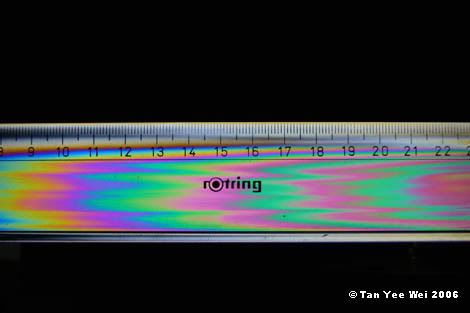
Click here for large size image
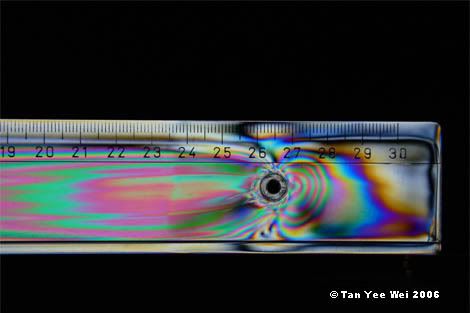
Click here for large size image
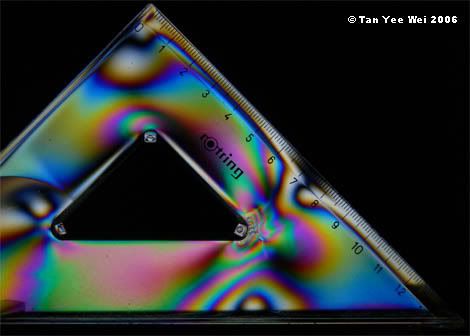
Click here for large size image
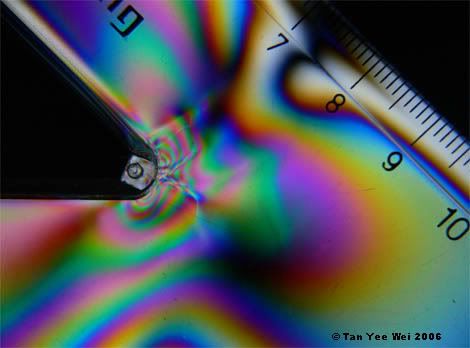
Click here for large size image
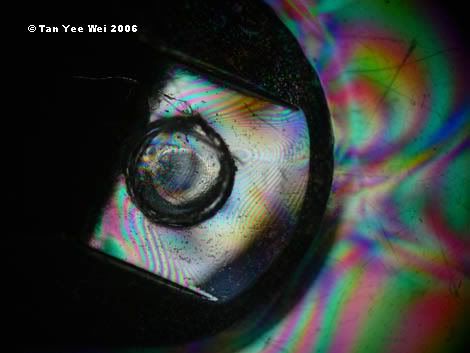
Click here for large size image
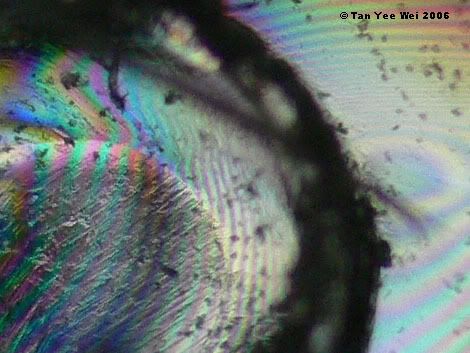
This is cropped from the previous image. The image spans 2mm.

Click here for large size image

Click here for large size image
Certain transparent materials’ optical properties change when stressed. This property can be used to study stress distributions in complicated objects.
One particular application of such a stress-dependent optical property is photoelasticity. The process is described in an extremely brief and (probably) inaccurate manner below:
For the real science behind photoelasticity, this is a good place to start looking.
One particular application of such a stress-dependent optical property is photoelasticity. The process is described in an extremely brief and (probably) inaccurate manner below:
Two polarizers are alighed so that their directions of polarisation are perpendicular. No light can pass through this set up.
A transparent plastic model is placed between these polarizers.
The plastic changes the polarisation of light passing through, such that light that passes through the model can then pass through the second polarizer.
Regions with different stresses change the optical properties in varying manners, and the stress distribution in the model can be observed visually
I would conjecture that the stress is proportional to the density of fringes, and in directions perpendicular to the fringes.
For the real science behind photoelasticity, this is a good place to start looking.

Click here for large size image
The stretched patterns along the ruler suggest that the manufacture of this item involved extrusion or rolling. The hole was then punched, resulting in residual stresses visible around it. There is a discontinuity between the 23rd and 24th cm marks, suggesting some sort of defect, probably a (shallow) surface crack. Stresses do not spread across the gap, resulting in different stress distributions across the crack.

Click here for large size image
It is possible that this set-square was injection moulded. Molten plastic was forced at high pressure into the mould from three nozzles located at the corners of the set-square. The material then flowed outward, filling up the straight edges. Material from 2 different injection ports would meet partway along the straight edges.

Click here for large size image

Click here for large size image
And of course, every geeky photoshoot must be accompanied with some sort of microscopy. Here, the image spans a length of approximately 8mm.

This is cropped from the previous image. The image spans 2mm.
The density of fringes on this stump shows that very large residual stresses are present in this part.
Labels: applied science, microscopy, photography

<< Home